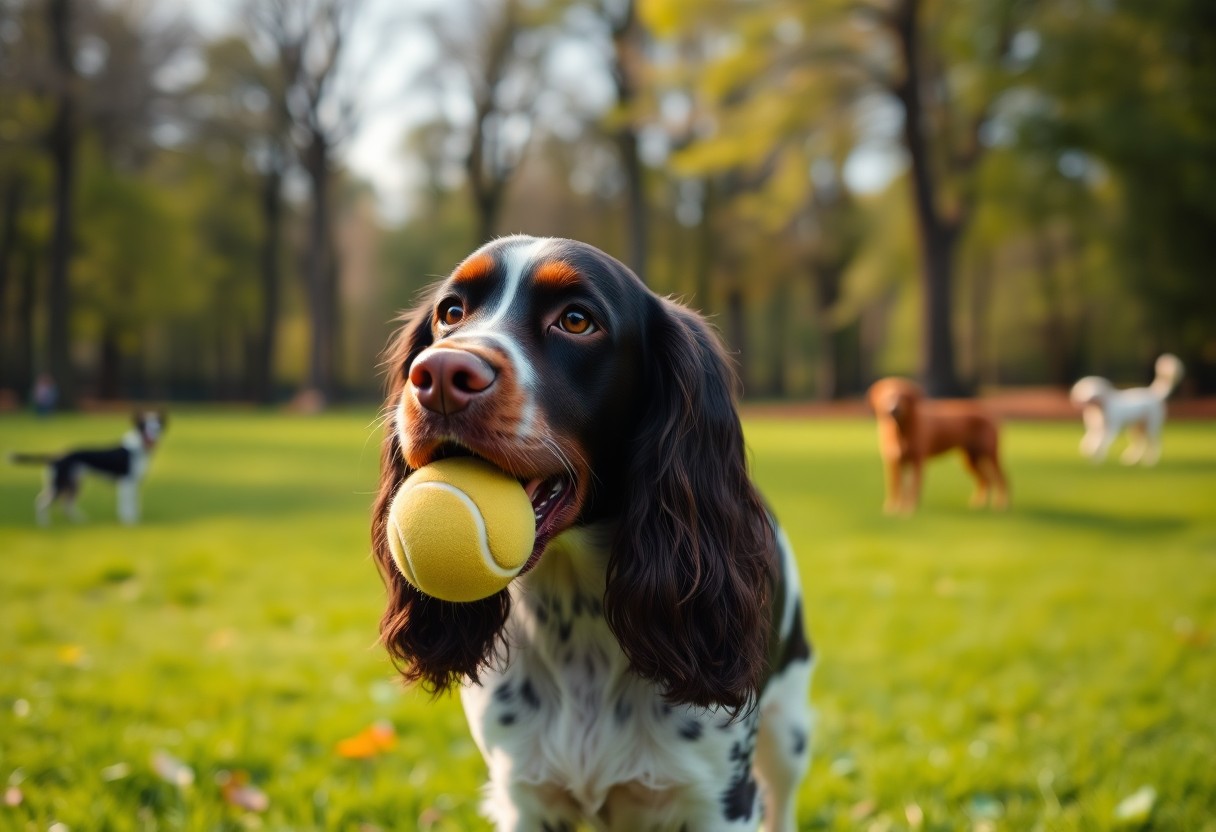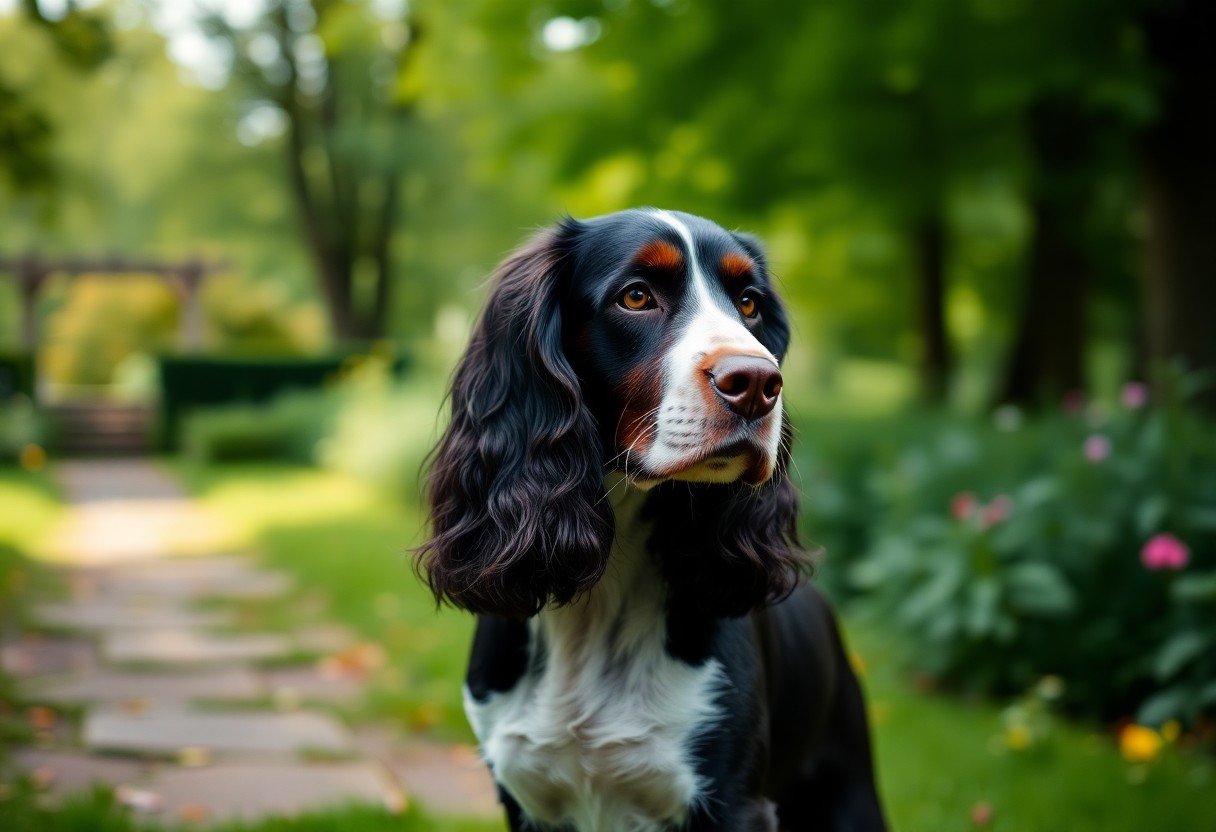Many dog enthusiasts wonder which spaniel breeds exhibit aggressive tendencies. While spaniels are generally known for their friendly and gentle nature, some individuals can display traits of aggression if not properly socialized or trained. Factors such as genetics, upbringing, and environment can play significant roles in their behavior. In this post, you will discover which spaniel breed is often considered the most aggressive and learn how to manage such characteristics effectively to ensure a well-behaved and happy companion.
Key Takeaways:
- The American Water Spaniel is often considered one of the more aggressive spaniel breeds due to its high energy and protective nature.
- English Springer Spaniels can also exhibit aggressive tendencies if not properly trained or socialized early.
- Understanding each spaniel’s individual temperament plays a key role in determining potential aggression levels.
- Proper training and socialization from a young age can significantly reduce aggressive behavior in any spaniel breed.
- Spaniels are generally known for their friendly dispositions, so aggression is not characteristic of the breed as a whole.
- Factors such as genetics, environment, and upbringing contribute to aggression in spaniels.
- Consulting with a professional dog trainer can assist owners in addressing and managing aggressive tendencies effectively.
Delving into Aggression: Defining the Parameters
Aggression in dogs can often stem from a range of factors, including genetics, environment, and socialization. The effect of dogs’ characteristics on aggressive behavior is well-documented, highlighting how a breed’s innate traits can predispose them to exhibit certain behaviors. Understanding the complex interplay of these elements is necessary for identifying and addressing aggression in spaniels accurately.
The Nature of Aggression in Dogs
Aggression in dogs typically manifests in several forms, including territorial, fear-based, and protective behaviors. Each type has distinct triggers, which may result from a dog’s upbringing, past experiences, or inherent personality traits. Recognizing these categories can aid you in addressing and modifying aggressive tendencies, thereby fostering a safer environment for your dog and those around them.
Specific Traits of Aggressive Spaniels
Certain spaniel breeds display aggressive tendencies primarily due to their protective instincts, high energy levels, and need for stimulation. For instance, the American Water Spaniel can be territorial, while others may react aggressively to perceived threats. These traits highlight the importance of proper training and socialization, as proactive measures can significantly mitigate aggression in these breeds.
In spaniels, aggressive behaviors often originate from their intensely loyal and protective nature. When these dogs feel their territory is encroached upon or their loved ones are threatened, they might exhibit defensive aggression. Moreover, spaniels’ high energy levels can contribute to behavioral issues if unmet with adequate exercise and mental stimulation. Regular training and early socialization play pivotal roles in redirecting any inclination toward aggression, providing you with the tools to cultivate a balanced and well-adjusted companion.
The Contenders: Most Known Aggressive Spaniel Breeds
Several spaniel breeds stand out when discussing aggression tendencies. The Cocker Spaniel, English Springer Spaniel, and the American Water Spaniel often emerge as key contenders. Each breed exhibits unique traits that may lead to aggressive behaviors under certain circumstances. Understanding these traits can help you manage and mitigate potential aggression, ensuring a safer environment for everyone involved.
The Cocker Spaniel: Affectionate but Feisty
Cocker Spaniels are typically known for their affectionate nature, but they can also be quite feisty. If not properly socialized and trained, they may resort to aggressive behaviors, especially when feeling threatened or overstimulated. Their protective instincts, coupled with a lively disposition, can lead to territorial aggression if boundaries are not set firmly.
The English Springer Spaniel: Energetic with a Complex Behavior
The English Springer Spaniel is hearty, with a blend of energy and a multifaceted temperament. They thrive on physical activity and mental stimulation, which, if lacking, can lead to various behavioral issues, including aggression. Known for their bouncing enthusiasm, they may express frustration by snapping or barking when overstimulated. Their loyalty to family members often results in protective behaviors, necessitating consistent training and early socialization.
With their lively personalities and boundless energy, English Springer Spaniels can easily become overwhelmed in chaotic situations. This breed often displays complex behaviors, showing both affectionate and assertive traits. If your Springer is regularly engaged through activities like agility training or obedience classes, they are less likely to exhibit aggression. Increasing their exposure to various environments while reinforcing positive interactions with people and other pets can help curb tendencies toward aggression, allowing them to develop into well-rounded companions.
Analyzing Aggression Triggers in Spaniels
Aggression in spaniels is often linked to various triggers, including environmental factors and genetic predisposition. Understanding these triggers is necessary for managing your dog’s behavior effectively. Identifying the situations that provoke aggression can lead to targeted training and behavioral modification strategies. You might observe that certain circumstances, such as unfamiliar people or animals, elicit a defensive response, revealing underlying anxieties or instincts that need addressing.
Environmental Factors Influencing Aggression
Environmental influences play a significant role in shaping your spaniel’s behavior. Factors such as socialization, training practices, and daily interactions can contribute to aggressive tendencies.
- Socialization: Lack of exposure to various people and pets can foster fear or aggression.
- Training Practices: Harsh discipline or inconsistent commands may lead to confusion and frustration.
- Daily Interactions: Stressful environments or lack of mental stimulation can trigger aggression.
Thou, addressing these areas early on can mitigate aggressive behaviors effectively.
Genetic Predisposition: Nature vs. Nurture
While environmental factors are necessary, genetic predisposition also significantly impacts your spaniel’s behavior. Certain breeds, such as the American Water Spaniel, may have inherent traits that make them more prone to aggression. However, how you nurture and train them has lasting effects on their temperament. Take, for instance, a spaniel with a lineage of aggressive behavior; if introduced to positive experiences and consistent training, it can lead to a well-adjusted pet.
Decades of breeding have resulted in spaniels displaying specific temperaments based on their lineage. However, nurturing plays an equally vital role. For example, the behavior of a spaniel can shift dramatically with the right socialization and training. An owner who invests time in working a spaniel through obedience training or exposes it to various environments can significantly alter its behavior. Understanding both the genetic and nurturing elements can provide insight into fostering a well-rounded companion, reducing the likelihood of aggressive behaviors.
Management and Training Strategies for Aggressive Tendencies
Managing a spaniel’s aggressive tendencies involves a combination of effective training techniques and an understanding of their behavior. Consistency in commands, along with positive reinforcement, helps to shape desired behaviors. Using methods like clicker training can encourage calmness and reduce impulsive reactions. Make sure to set your spaniel up for success by controlling their environment and avoiding situations that trigger aggression, gradually increasing exposure to previously intimidating stimuli under controlled circumstances.
Practical Training Techniques That Foster Calmness
Employing calm training techniques can significantly reduce aggressive behavior in spaniels. Techniques such as teaching “leave it” or “watch me” commands can redirect attention away from triggers and refocus on you. Engaging in short, positive training sessions encourages them to learn how to cope with stressors calmly. Incorporate plenty of physical exercise and mental stimulation into their routine, as a tired dog is often a well-behaved dog.
The Role of Socialization in Mitigating Aggression
Socialization plays a fundamental role in curbing aggressive behaviors in spaniels. Early exposure to various environments, humans, and other animals helps your dog develop a more balanced approach to new experiences. Aim for gradual introductions and positive associations, such as treats or praise, when your spaniel encounters unfamiliar situations. This process not only reduces anxiety but also fosters confidence, which can prevent aggressive reactions over time.
Engaging your spaniel in diverse social settings is imperative for their emotional development. Evidence shows that dogs who are properly socialized before six months are less prone to aggression later in life. Enroll your spaniel in puppy classes or take them to dog parks where they can interact with well-behaved dogs. Observing normal social interactions teaches them appropriate behavior, thus contributing to a harmonious relationship with both people and other pets.
Real-Life Implications: Living with an Aggressive Spaniel
Owning an aggressive spaniel can significantly impact your daily life and interactions. These dogs often exhibit unpredictable behavior, which can lead to anxiety for both you and those around you. In fact, studies suggest that Cocker spaniels are meanest dogs when not socialized properly, emphasizing the need for early intervention and consistent training to mitigate issues.
Daily Challenges Faced by Owners
Managing an aggressive spaniel makes daily life challenging. You may find yourself constantly on alert during walks, avoiding busy areas or other animals to prevent potential conflicts. Routine activities, such as playtime or family gatherings, can become stressful endeavors as your dog may display possessiveness or react aggressively to perceived threats. Building a safe and enjoyable environment requires ongoing diligence.
Community and Home Safety Considerations
Safety is a primary concern when living with an aggressive spaniel. You have to ensure your home environment accommodates necessary precautions, like using secure barriers or crates. Maintaining leadership and control is vital, as your dog may not respond well in chaotic situations. Additionally, involving neighbors and educating others about your dog’s behavior can help minimize misunderstandings.
Community perception can often affect how you and your aggressive spaniel are viewed. It’s beneficial to establish a proactive communication strategy within your neighborhood. Engage with your community by providing information on how to approach your dog safely and discussing your commitment to training and socialization. This not only fosters a sense of trust, but also encourages a harmonious environment where your dog feels secure while minimizing risks of aggression towards others.
Summing up
So, if you’re considering adding a spaniel to your home, understanding the characteristics of various breeds is imperative. Generally, the American Cocker Spaniel is often deemed the most aggressive due to its potential for resource guarding and strong prey drive. However, with proper training, socialization, and care, you can mitigate aggressive tendencies in any breed. Always focus on creating a nurturing environment for your dog, ensuring they feel secure and well-adjusted, which will help foster positive behavior regardless of the spaniel type you choose.
FAQ
Q: What is the most aggressive spaniel breed?
A: The most commonly discussed aggressive spaniel breed is often considered to be the American Cocker Spaniel. This perception can arise from a combination of negative experiences reported by some owners, but it does not universally define the breed. Aggression in dogs often results from poor training, lack of socialization, and individual temperament, rather than being inherent to specific breeds.
Q: Are all spaniels aggressive?
A: No, not all spaniels are aggressive. In fact, many spaniels are known for their friendly and gentle temperaments. Breeds like the Cavalier King Charles Spaniel and the English Springer Spaniel are typically regarded as affectionate and good-natured. Aggressiveness can be influenced by various factors, including upbringing, environment, and training.
Q: What factors contribute to aggression in spaniels?
A: Several factors can contribute to aggression in spaniels, including genetics, socialization, training methods, and environmental stressors. A lack of positive experiences with other pets or people during formative months can lead to fear-based aggression. Additionally, improper training techniques can foster anxiety and territorial behavior.
Q: What are the signs of aggression in spaniels?
A: Signs of aggression in spaniels can include growling, snapping, barking excessively, showing teeth, and a stiff body posture. Some spaniels may also exhibit fearful behaviors such as hiding or cowering before displaying aggression as a defensive mechanism. It’s important to observe overall behavior and body language to accurately understand a dog’s emotional state.
Q: How can I prevent aggressive behavior in my spaniel?
A: Preventing aggressive behavior in spaniels involves early socialization, consistent and positive training methods, and exposure to various environments, people, and other animals. Engaging in obedience training and providing mental stimulation can also help to reduce anxiety and establish a bond of trust between the dog and owner.
Q: Is professional training recommended for aggressive spaniels?
A: Yes, professional training is often recommended for addressing aggressiveness in spaniels. A qualified dog trainer or behaviorist can assess the dog’s behavior, create a targeted training plan, and provide guidance on building positive associations with triggers that may cause aggression. Professional support is invaluable in promoting safe and effective training practices.
Q: Can aggressive behavior in spaniels be corrected?
A: Yes, with appropriate interventions, many aggressive behaviors in spaniels can be modified. It requires time, patience, and consistent positive reinforcement strategies. The owner must address the root causes of aggression and work collaboratively with a trainer to implement effective behavior modification techniques, allowing for a safer and happier environment for both the pet and the owner.


